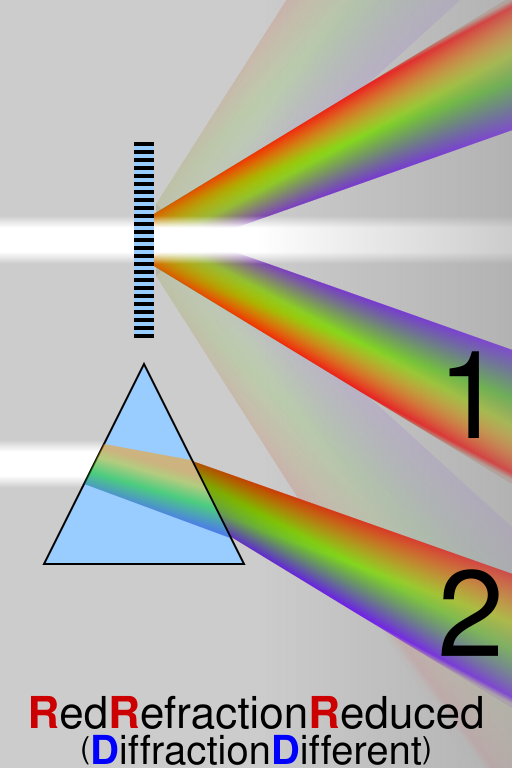johnnydeep wrote: ↑Sun Dec 31, 2023 4:46 pm
Chris Peterson wrote: ↑Sat Dec 30, 2023 11:33 pm
johnnydeep wrote: ↑Sat Dec 30, 2023 9:43 pm
Well, a prism causes diffraction for different wavelengths of light because of the length of glass that the light travels through. It seems like you're saying that the different lengths of atmosphere that the light travels through at the top and bottom of the moon does the same thing through dispersion rather than diffraction, right? Although I'm unclear about the difference between diffraction and dispersion.
Refraction is the bending of a light ray when it passes from a medium with one index of refraction (speed of light in that medium) to one with another. Light rays coming to us from outside the atmosphere always bend except when they come directly from the zenith. The closer the source is to the horizon, the greater the bend angle. (It's actually more of an arc, because the index of refraction of air changes as you get closer to the ground). When we
see the Sun set, the actual Sun is already well below the horizon. We would have seen it set a few minutes earlier if we had no atmosphere to bend its rays.
Dispersion (which is quantified with a value called the Abbe number) measures the variation of the index of refraction as a function of wavelength. A prism does not work because different wavelengths pass through different amounts of glass. It works because red light bends (refracts) less when it crosses the air/glass boundary than violet light does. Dispersion is what causes rainbows, because different wavelengths are bent through different angles when they pass into and out of water droplets.
Diffraction is an interference phenomenon typically associated with how light interacts with apertures and edges, and doesn't have anything to do with the current discussion.
Thanks. But darn, so many new questions...which I won't bother you with...at least not for a while.

But here's a start: so then why is a prism triangular? Could it instead be just a tilted flat piece of glass? Does it even have to be tilted?
When light passes from air to glass an angle, it bends towards the normal; when it passes from glass to air, it bends away from the normal (refraction). Shorter wavelengths bend more (dispersion). If you shine light at an angle into a flat piece of glass, the same thing happens, but when the light exits, it all bends back to be parallel (but slightly offset) to the original rays. So the spreading stops, and the resulting spectrum is probably not separated enough to be visible (but you may see fringing around the exit beam similar to that around the Moon in this APOD). You don't need a triangle as such, but you want your two faces to not be parallel. That way the different wavelengths exit at different angles, and the farther away you get, the more separated they are.
Light that enters parallel to the normal doesn't refract, so there is no bending and no dispersion. (Well, technically there
is dispersion, because the speed of light is different for different wavelengths... so there is a change in the phase of different wavelength components passing through a planar optic. That property is used in a lot of optical configurations.)
 The Last Full Moon
The Last Full Moon